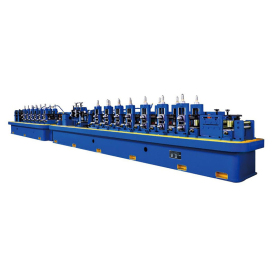In the fast-paced world of manufacturing and construction, efficiency is paramount. As companies strive to optimize their production processes and reduce operational costs, machinery plays an invaluable role. Among the various cutting-edge technologies, the Industrial Flying Saw Machine has emerged as a revolutionary tool that significantly enhances production capabilities. In this article, we will delve into the evolution of the Industrial Flying Saw Machine, its working principles, applications across different sectors, and the advantages it offers over traditional cutting methods.
Evolution of Industrial Flying Saw Machines

The Evolution and Advantages of the Industrial Flying Saw Machine: Revolutionizing Cutting Processes in Various Industries
The concept of flying saws dates back several decades, with early versions often manually operated and used primarily in basic production settings. Traditional saws required direct handling and were often limited in their cutting speeds and precision. As industries began to explore automation and more sophisticated technology, the design and functionality of flying saw machines transformed drastically.
Modern Industrial Flying Saw Machines leverage advanced engineering and computerized controls, allowing for greater precision and efficiency. These machines are now equipped with features such as programmable logic controllers (PLCs), enabling operators to set specific cutting parameters for different materials and dimensions. Additionally, advancements in blade technology have led to the development of ultra-precise saw blades that can cut through even the toughest materials with minimal friction and heat generation.
How Industrial Flying Saw Machines Work
An Industrial Flying Saw Machine operates on a simple yet effective principle. Essentially, the saw blade moves at high speed to make cuts on moving materials. This sets the machine apart from traditional stationary saws, as it allows for cutting while materials are in motion, such as during continuous production lines.
The process begins with the material being fed into the machine via a conveyor system. As the material reaches the cutting zone, the flying saw activates, slicing through it with precision. This capability not only speeds up the cutting process but also reduces the downtime typically associated with traditional cutting methods where materials must be stopped and repositioned for each cut.
Applications Across Various Industries
The versatility of Industrial Flying Saw Machines makes them invaluable in a multitude of industries. Some of the most common applications include:
1. **Metal Fabrication**: In metalworking, flying saws are particularly useful for cutting long lengths of metal bars, pipes, and beams. Their ability to maintain a straight edge and precise dimensions ensures high-quality finished products. 2. **Woodworking**: The machine is equally applicable in the wood industry, where it can handle large timber pieces, making quick and precise cuts for furniture manufacturing or construction projects.

The Evolution and Advantages of the Industrial Flying Saw Machine: Revolutionizing Cutting Processes in Various Industries

The Evolution and Advantages of the Industrial Flying Saw Machine: Revolutionizing Cutting Processes in Various Industries
3. **Automotive Manufacturing**: In automotive assembly lines, flying saws are employed to cut various component materials, facilitating efficient production cycles and maintaining strict quality standards.
4. **Construction**: For construction applications, flying saws can cut through reinforcing steel bars and other materials critical to building structures.
Advantages of Using Industrial Flying Saw Machines
The Industrial Flying Saw Machine offers several advantages over traditional cutting methods:
1. **Increased Speed and Efficiency**: The ability to cut materials while they are in motion significantly enhances production speed. This leads to higher output and improved operational efficiency.
2. **Precision Cutting**: With advanced technology, these machines provide superior precision, resulting in clean cuts that require minimal finishing. This precision also reduces waste material, contributing to cost savings.
3. **Reduced Downtime**: Unlike traditional saws, where operators must stop and reposition materials, flying saws operate continuously. This drastically reduces downtime, leading to more productive work hours.
4. **Improved Safety**: Many modern flying saw machines come with safety features that minimize the risk of accidents. Enclosed cutting environments, automated controls, and emergency stop functions all contribute to a safer workplace.
5. **Versatile Material Handling**: These machines can easily adapt to different materials, whether metals, wood, or composite materials, making them a valuable asset to any production line.
Conclusion
The Industrial Flying Saw Machine represents a significant advancement in cutting technology. Its evolution from simple manual tools to sophisticated automated systems has changed the landscape of manufacturing and construction industries. By offering speed, precision, and safety, flying saws are set to be an integral component of efficient production processes for years to come. As industries continue to innovate and demand better solutions, the Industrial Flying Saw Machine stands ready to meet these challenges head-on, driving progress and improvement in various sectors.Reliable Spare Parts for Cold Cutting Saws



